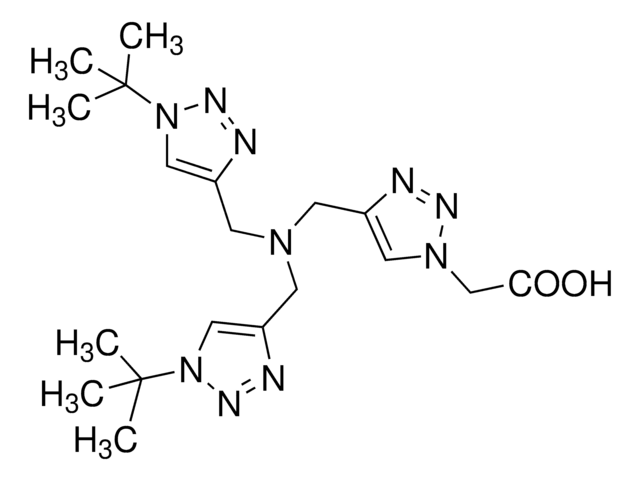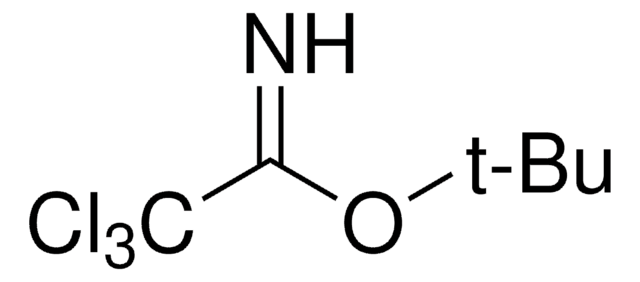678937
Tris[(1-benzyl-1H-1, 2, 3-triazol-4-yl)methyl]amine
97%
Sinónimos:
TBTA
About This Item
Productos recomendados
assay
97%
form
solid
reaction suitability
reagent type: ligand
reaction type: click chemistry
mp
132-143 °C
storage temp.
−20°C
SMILES string
C(N(Cc1cn(Cc2ccccc2)nn1)Cc3cn(Cc4ccccc4)nn3)c5cn(Cc6ccccc6)nn5
InChI
1S/C30H30N10/c1-4-10-25(11-5-1)16-38-22-28(31-34-38)19-37(20-29-23-39(35-32-29)17-26-12-6-2-7-13-26)21-30-24-40(36-33-30)18-27-14-8-3-9-15-27/h1-15,22-24H,16-21H2
InChI key
WKGZJBVXZWCZQC-UHFFFAOYSA-N
Categorías relacionadas
Application
Related product
hcodes
Hazard Classifications
Aquatic Chronic 4
Storage Class
11 - Combustible Solids
wgk_germany
WGK 3
flash_point_f
Not applicable
flash_point_c
Not applicable
ppe
Eyeshields, Gloves, type N95 (US)
Elija entre una de las versiones más recientes:
¿Ya tiene este producto?
Encuentre la documentación para los productos que ha comprado recientemente en la Biblioteca de documentos.
Los clientes también vieron
Nuestro equipo de científicos tiene experiencia en todas las áreas de investigación: Ciencias de la vida, Ciencia de los materiales, Síntesis química, Cromatografía, Analítica y muchas otras.
Póngase en contacto con el Servicio técnico











